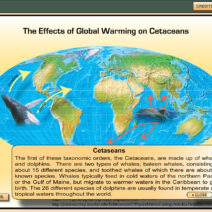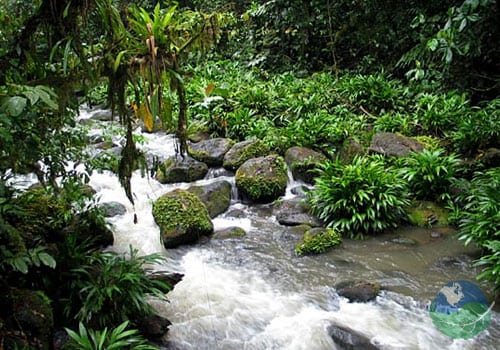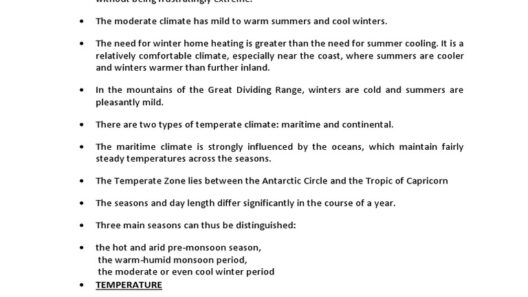Understanding the climate of Costa Rica is essential for those who wish to explore its lush landscapes, vibrant biodiversity, and outdoor adventures. Nestled between the Pacific Ocean and the Caribbean Sea, this Central American nation is often hailed as a tropical paradise. However, its climate is nuanced and varies significantly across different regions and seasons. This article delves deep into what constitutes the climate of Costa Rica, focusing on its diverse weather patterns, the impact of seasonal changes, and how these elements shape the experiences of travelers and locals alike.
Climate Zones: A Tapestry of Diversity
Costa Rica’s climate is predominantly tropical, but it encompasses a variety of microclimates due to its varied topography. The country features distinct climatic zones, each with unique characteristics that cater to different ecosystems and wildlife.
In the lowland coastal areas, such as Guanacaste and the Nicoya Peninsula, the climate is characterized by a tropical dry season. Here, the scorching sun produces high temperatures ranging between 75°F (24°C) and 95°F (35°C) during the day, with minimal rainfall from December to April. This season attracts many sun-seekers, as the beaches become a hub for water sports and relaxation.
On the other hand, the Central Valley and higher elevations experience a temperate climate. The elevation can lower temperatures significantly, providing a refreshing contrast to the coastal heat. In places like San José or the lush rainforest region of Monteverde, average temperatures hover around 60°F (15°C) to 75°F (24°C) year-round, with cooler nights prompting locals to reach for light jackets. This area is particularly known for its rich biodiversity and offers a different kind of delight for nature lovers and adventurers alike.
The Caribbean coast, particularly regions like Puerto Viejo, boasts a more humid and wet climate, receiving significant rainfall throughout the year. This area embodies the quintessential tropical rainforest climate, fostering a verdant landscape teeming with wildlife and flora. It is here that one can witness the raw beauty of nature, where vibrant flowers bloom amidst tall trees, and exotic wildlife flourishes.
Understanding the diverse climate zones helps travelers plan their itineraries and enjoy each experience to the fullest, ensuring they are equipped for what to expect in each region.
Seasons in Costa Rica: The Transition of Weather
Costa Rica experiences two primary seasons: the dry and the wet season, each boasting its own characteristics and experiences. Knowing these transitions can significantly enhance travel experiences and outdoor activities.
The dry season generally spans from December to April, making it the peak tourist season. Tourists flock to beaches, national parks, and other natural wonders. Days are typically sunny and warm, ideal for outdoor excursions. However, a little-known fact about this season is that afternoons can also bring brief rain showers, especially in coastal areas, leading to stunning sunsets that illuminate the sky.
Conversely, the wet season, from May to November, transforms Costa Rica into a vibrant spectacle of greenery. The intense rainfall can sometimes be daunting, yet it provides life-giving water that sustains the country’s lush ecosystems. This is the time for adventurers who seek a more intimate experience with nature. Waterfalls swell, and rivers surge, allowing for thrilling rafting experiences. Moreover, the flora and fauna explode into life, and many wildlife enthusiasts consider this the best time to observe animal behaviors. For example, the nesting season for sea turtles falls within these months, providing a once-in-a-lifetime opportunity to witness this miraculous natural phenomenon.
The transition between these seasons also marks a significant change in humidity levels, which can influence the comfort of travelers. Those unaccustomed to tropical climates should be prepared for the sudden shift in humidity, particularly when venturing into the rainforest regions.
Climate Change and Its Implications
Like many regions worldwide, Costa Rica faces the existential threat of climate change. The country’s natural beauty and biodiversity are at risk due to rising temperatures, unpredictable weather patterns, and increased occurrences of extreme weather events such as floods and droughts.
Climate change could exacerbate the dry seasons, negatively impacting agriculture and the availability of water resources. This, in turn, affects the livelihoods of many locals who rely on farming and tourism. As eco-conscious travelers, it is imperative to acknowledge these challenges and advocate for sustainable practices that preserve Costa Rica’s natural environment.
Efforts to combat climate change in Costa Rica are commendable and important. The government has taken significant strides toward sustainability, aiming to become carbon neutral by 2050. Initiatives include reforestation projects, promotion of electric vehicles, and the development of eco-friendly tourism. Active participation by visitors in sustainable practices can contribute significantly to these goals, making a positive impact on the local environment.
In conclusion, Costa Rica’s climate is more than just an environmental factor; it is intrinsically tied to the rich experiences the country offers. From the dry heat of the coastal areas to the cool highlands and the humid jungles, each region provides unique opportunities for exploration and adventure. Awareness of seasonal changes and climate impacts can enhance one’s journey through this tropical paradise while contributing to its preservation for future generations.





